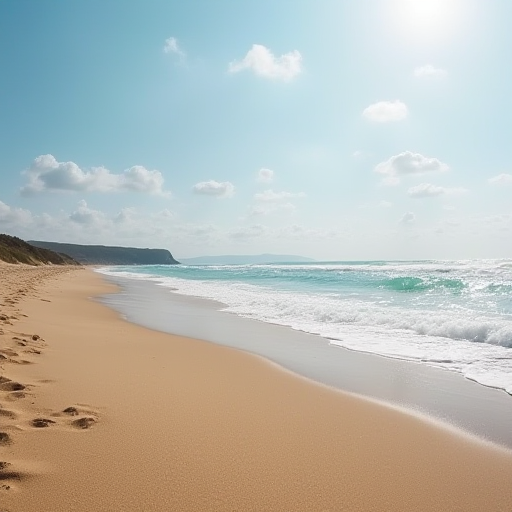
Why is Sand Soft?
Sand, with its granular texture and ability to shift and mold under pressure, is one of nature's most ubiquitous materials. Found on beaches, deserts, and riverbeds, sand is not only a staple in various landscapes but also a subject of fascination due to its unique properties. One of these properties is its softness. But what makes sand soft? This article delves into the composition, structure, and physical characteristics of sand to explain this intriguing phenomenon.
Composition of Sand
Sand is primarily composed of finely divided rock and mineral particles. The most common component of sand in inland continental settings and non-tropical coastal settings is silica (silicon dioxide, or SiO2), usually in the form of quartz. This is due to the considerable hardness of quartz, its chemical inertness, and its abundant presence in the Earth's crust. Other materials that can be present in sand include calcium carbonate, feldspar, mica, and sometimes magnetic minerals like magnetite.
Granular Structure
Particle Size
The softness of sand is largely attributed to its granular nature. Sand particles typically range in size from 0.0625 to 2 millimeters in diameter. This small size allows the particles to move easily over one another, lending a degree of fluidity and flexibility to the sand as a whole.
Roundness and Shape
The individual grains of sand can vary in shape from angular to rounded. Over time, weathering processes, such as wind and water erosion, tend to round off the edges of sand particles. This roundness contributes to the softness of sand, as rounded particles are less likely to lock together and can roll past one another with minimal friction.
Physical Properties
Dry vs. Wet Sand
The perception of sand's softness can change significantly depending on whether it is dry or wet. Dry sand is softer because the grains can move freely, providing a cushioning effect. In contrast, wet sand is firmer because the presence of water creates surface tension between the grains, causing them to stick together temporarily.
Air Trapped Between Grains
In dry conditions, the spaces between sand particles are filled with air. This air acts as a buffer, allowing the particles to compress and give way under pressure, contributing to the sensation of softness. This is why walking on dry sand feels more cushioned compared to walking on a solid surface.
Pressure Distribution
When pressure is applied to sand, such as when stepping on it, the grains shift and distribute the weight evenly. This ability to disperse pressure across a broad area reduces the force experienced at any single point, making sand feel softer compared to solid surfaces, which do not have this capacity for redistribution.
Environmental Influences
Coastal and Desert Sands
The softness of sand can also differ based on its environmental context. For instance, coastal sands, often shaped by the constant action of waves and currents, tend to be finer and rounder, enhancing their softness. Desert sands, shaped primarily by wind, can also be very soft due to their fine grain size and rounded edges from prolonged erosion processes.
Mineral Composition
The mineral composition of sand can influence its texture. Sands rich in quartz are typically softer due to quartz's smooth surface and resistance to chemical weathering. In contrast, sands containing a higher proportion of rougher, more angular minerals may feel coarser and less soft.
Conclusion
Sand's softness is a product of its granular structure, particle size, and mineral composition, as well as the physical properties that allow it to shift and compress under pressure. Its ability to distribute weight and its interaction with moisture further enhance its soft characteristics. Understanding why sand is soft not only illuminates the fascinating properties of this common material but also enriches our appreciation of the natural processes that shape our world. Whether by the beach, in the desert, or along a riverbank, the softness of sand is a delightful reminder of the intricate beauty of Earth's geological processes.
